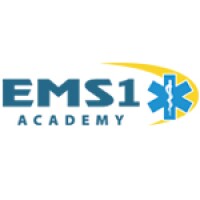The EMS1 Academy features “Module 10: Airway Management,” a 1.5-hour CAPCE accredited course for EMTs and paramedics. Complete the course to learn about shock or hyperfusion, a state of collapse and failure of the cardiovascular system. Email the EMS1 Academy to learn more and for an online demo.
Supraglottic airway devices have emerged as valuable tools for airway management, particularly in cardiac arrest. When compared to endotracheal intubation, in which some studies have found high rates of misplacement, skill degradation and prolonged pauses of chest compressions during cardiac arrest, supraglottic airway devices are an attractive alternative.
Some studies have shown improved survival in cardiac arrest when compared to intubation, and supraglottic airway devices:
- Are placed blindly.
- Require less training time.
- Can be placed in less time.
- Are easier to place during chest compressions.
A number of supraglottic airway devices are available, including:
- Laryngeal Mask Airway.
- Combitube.
- King Airway.
- air-Q.
- I-Gel (which can be placed blindly into the esophagus or hypopharynx. Ventilation is delivered through a port positioned above the glottic opening, and inflated cuffs or gel isolate the glottic opening to facilitate ventilation and protect the lower airway from aspiration.).
Supraglottic airways are not without complications. They must be inserted to the correct depth for the ventilation port to be over the glottic opening. A recent study shows a high rate of unrecognized misplacement of one supraglottic airway device, which is just as devastating as a misplaced endotracheal tube [1].
Other studies of various devices have described cases of inadequate ventilation, inadequate protection from aspiration, and an inability to detect lung sounds after placement.
Supraglottic airway devices are ineffective for patients with upper airway edema, such as from burns or anaphylaxis. Balloon over inflation can also cause upper airway trauma and compromise circulation through blood vessels in the neck.
Continuous monitoring of waveform capnography to ensure correct placement and effective ventilation is every bit as important for supraglottic airway devices as it is for endotracheal tubes. With SGAs and capnography monitors available at the BLS level, they should be utilized together in any patient who has an SGA placed.
As debate continues about whether supraglottic airway devices are superior to endotracheal intubation for prehospital airway management, which supraglottic airway device is most effective or if either option is superior to ventilation with a bag valve mask, most EMS providers now carry a supraglottic airway device as an option for airway management.
Here are three things trainers should emphasize for EMS providers at all levels about supraglottic airway devices:
1. Know your supraglottic airway device.
While all supraglottic airway devices isolate and ventilate above the glottic opening, each device is available in different sizes based on the patient’s height or weight, some have pediatric sizes and each have specifications depth of insertion.
Supraglottic airways with pilot balloons have specifications for the amount of air needed for inflation, which may also depend on the patient’s size. Read and reread the manufacturer’s instructions, watch online videos for the device your service has and have reference tools available.
Practice supraglottic airway device placement in simulation from start to finish, including positioning patients on realistic scenes, opening packages and preparing all equipment. Practice confirming supraglottic airway placement by attaching the capnography circuit before the first ventilation, and continuing to monitor ETCO2 and respiratory rate during movement. Use scenarios for different situations, such as:
- Unsuccessful intubation attempts during cardiac arrest.
- Copious vomit in airway and Ineffective ventilation with a supraglottic airway device.
- Loss of ETCO2 with a supraglottic airway after movement to the ambulance.
2. Know your service’s protocols for supraglottic airway placement.
The indications for supraglottic airways vary widely among services based on local data, protocols, provider level and medical direction. Supraglottic airway devices may be utilized as a backup in the case of unsuccessful endotracheal intubation at one service, or be the primary advanced airway option at another.
Supraglottic airway devices may also be used at the BLS and first responder level, and transporting paramedics may arrive with one already in place.
Consider moving to a supraglottic airway early when an intubation attempt is unsuccessful, if the patient desaturates during an intubation attempt, or if chest compressions interfere with intubation attempts. Have a clear idea about when a supraglottic airway and other tools for airway management are indicated at your service before a situation where one is needed.
3. Monitor waveform capnography before and immediately after the supraglottic airway is placed.
End-tidal CO2 detection is vital for confirming supraglottic airway placement and for monitoring ventilation rate. Because auscultation of the chest and abdomen is less reliable with supraglottic airways than with endotracheal tubes, be sure to apply the capnography circuit before the first ventilation is delivered through the device.
If there is no ETCO2 reading or poor compliance with ventilation, check insertion depth, head position, and cuff pressure. Also monitor for air leakage through the mouth. Remove the device if the there is a prolonged period without ventilation or if the patient desaturates while troubleshooting attempt ventilation with a BVM. Consider another attempt with a supraglottic airway device, perhaps with another size. Also consider other options for airway management, such as continued ventilation with a BVM, endotracheal intubation or a surgical airway.
It is even better to monitor ETCO2 while the patient is being ventilated with a bag valve mask before an advanced airway is placed. Doing so provides feedback on the effectiveness of ventilation with a BVM, and provides a baseline to compare ETCO2 to after the airway is in place.
Once a supraglottic airway is confirmed to be in place, it may still become dislodged from head movement or obstructed by blood or vomit, which would be detected immediately with a loss of ETCO2. Waveform capnography also provides real-time feedback on ventilation rate, which should be used to avoid hypo or hyperventilating the patient.
Understand the benefits and complications associated with supraglottic airways. Practice device-specific placement and confirmation technique, and rely on waveform capnography to assess placement and effective ventilation.
References
- Vithalani V, Vik S, Davis S, Richmond N. Unrecognized failed airway management using a supraglottic airway device. Resuscitation. 2017 October; 19:1-4.















